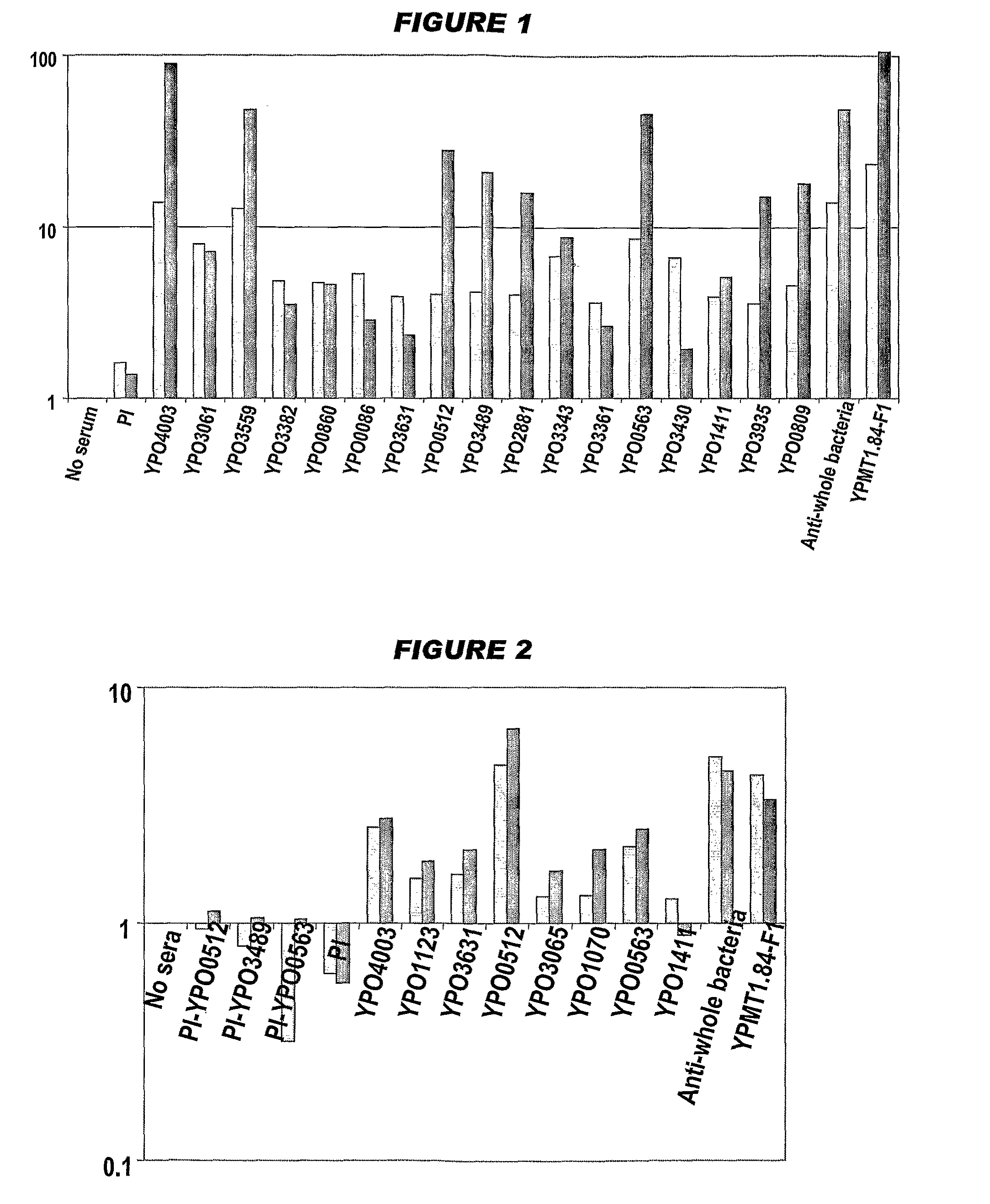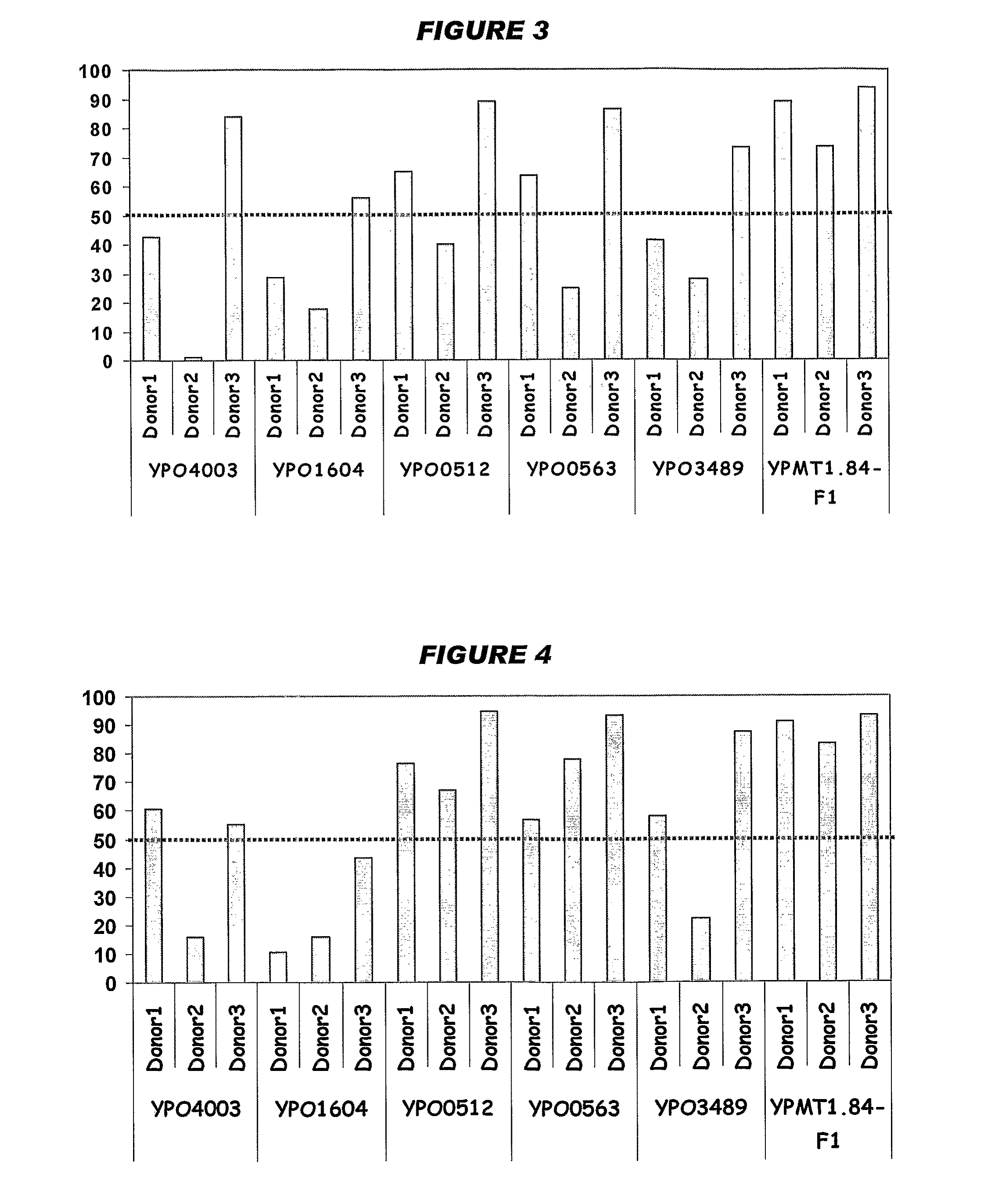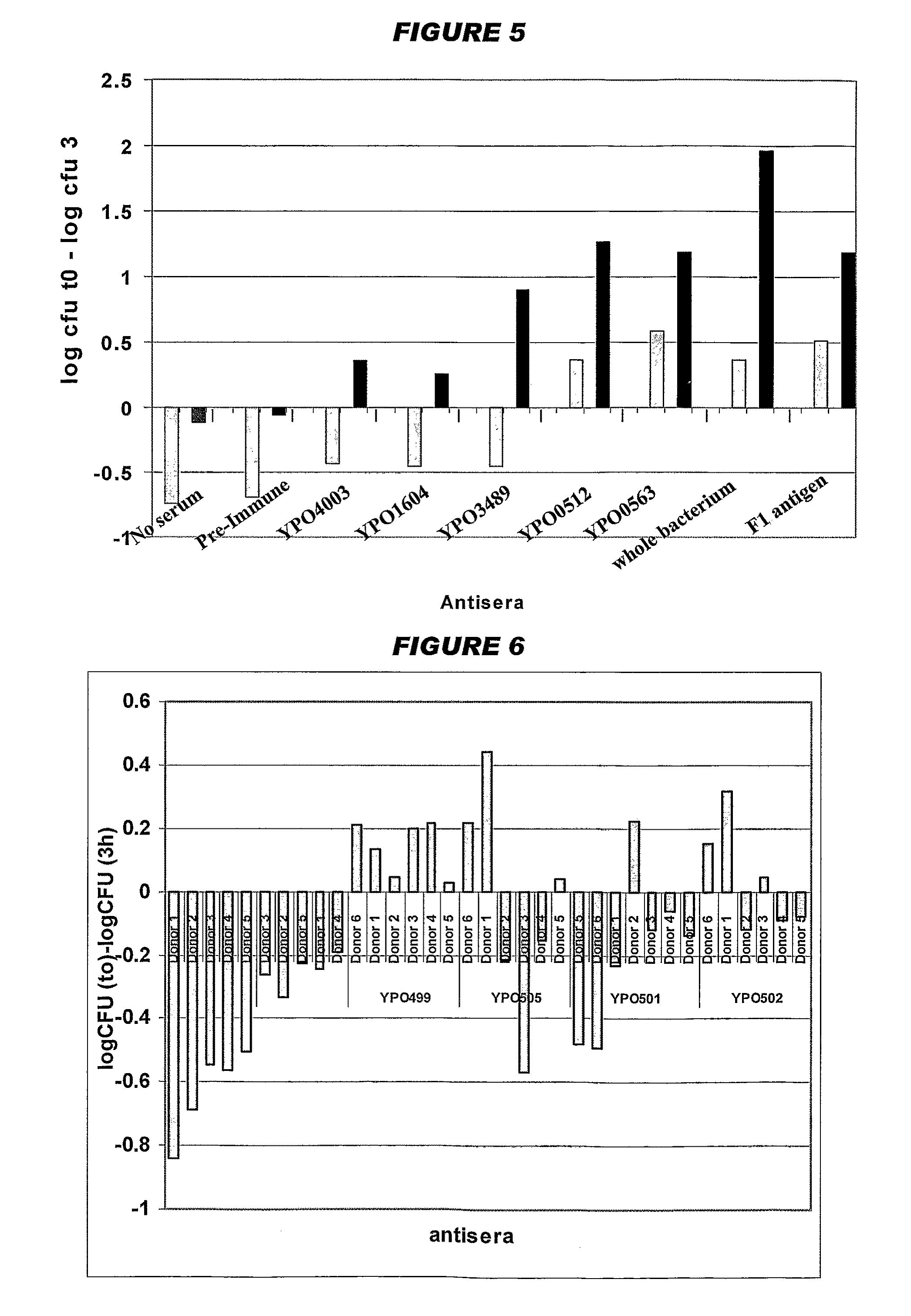Compositions comprising Yersinia pestis antigens
a technology of yersinia pestis and antigens, applied in the field of immunology and vaccinology, can solve the problems of not being able to effectively fight aerosol challenge, unpleasant side effects, and vaccines that fail to protect against f1sup>/sup> variants,
- Summary
- Abstract
- Description
- Claims
- Application Information
AI Technical Summary
Benefits of technology
Problems solved by technology
Method used
Image
Examples
Embodiment Construction
Antigen Identification
[0391]The Y. pestis genome includes more than 4000 open reading frames, and its annotation includes little information useful for the identification of useful immunogens. To identify useful immunogens from within these 4000 possibilities, four approaches were utilised. Firstly, computational analysis of the genome was used to identify useful immunogens. Second, transcriptional profiling was used to identify highly-expressed genes under in vitro and in vivo growth conditions, and in particular after a temperature shift from 28° C. to 37° C., which mimics the natural host change from flea to mammal. Third, comparative genomic hybridization (CGH) was used to identify genes that are conserved in a variety of Y. pestis clinical isolates representative of major biovars [203]. Fourth, surface shaving and labelling were used to identify surface-exposed proteins (cf. reference 204).
[0392]The first three approaches eliminated about 90% of the ORFs. The remaining ˜400 ORF...
PUM
| Property | Measurement | Unit |
|---|---|---|
| concentration | aaaaa | aaaaa |
| molar ratio | aaaaa | aaaaa |
| molar ratio | aaaaa | aaaaa |
Abstract
Description
Claims
Application Information
 Login to View More
Login to View More - R&D
- Intellectual Property
- Life Sciences
- Materials
- Tech Scout
- Unparalleled Data Quality
- Higher Quality Content
- 60% Fewer Hallucinations
Browse by: Latest US Patents, China's latest patents, Technical Efficacy Thesaurus, Application Domain, Technology Topic, Popular Technical Reports.
© 2025 PatSnap. All rights reserved.Legal|Privacy policy|Modern Slavery Act Transparency Statement|Sitemap|About US| Contact US: help@patsnap.com



